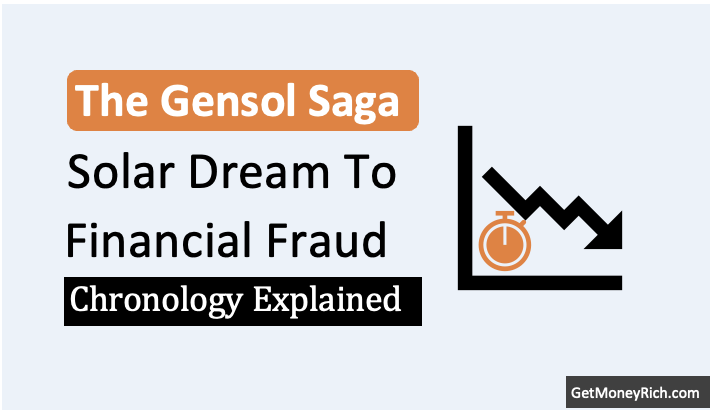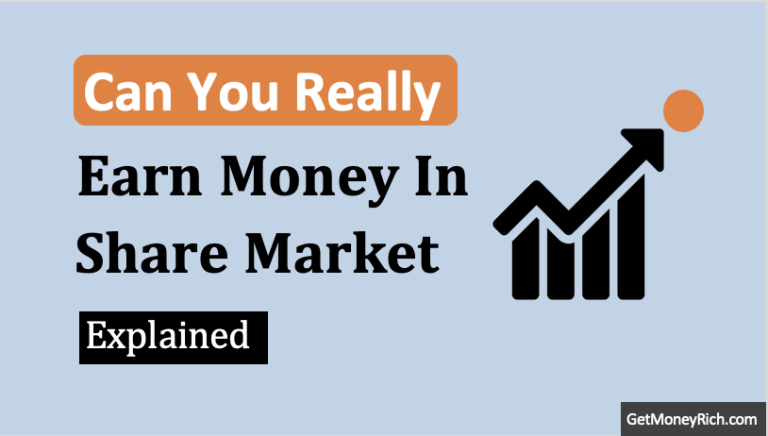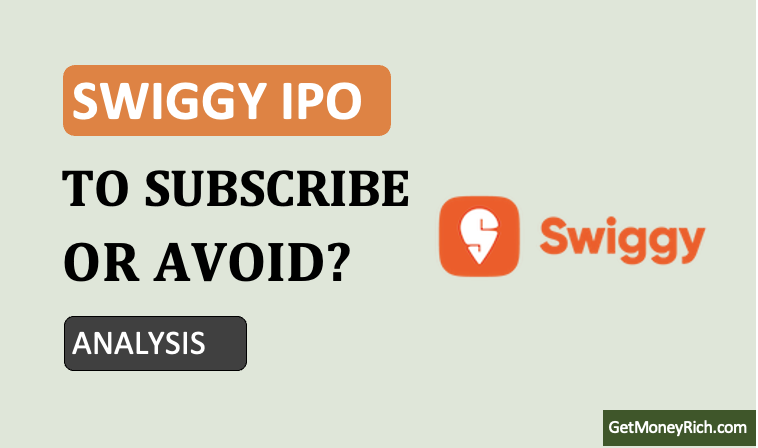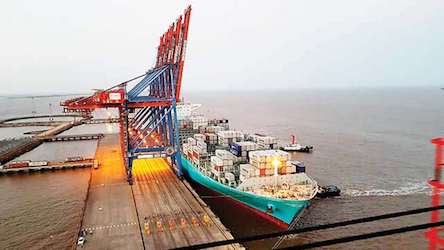In the stock market, fortunes are made and lost each day. I as an investor seek refuge in concepts akin to medieval fortifications. Imagine a castle surrounded by a deep, wide trench, protecting it from attackers and providing a strategic advantage in times of war (attack). In stock investing, the economic moat serves a similar purpose. It shields a company from the competitive onslaught. “Moat” is an expression to define fortification that a company has built around its business to maintain its position in the market.

But what exactly is this metaphorical moat? Why it can be our flashlight while navigating the unpredictable waters of the stock market? Let’s know more about this concept.
Point #1: Defining the Economic Moat
The economic moat refers to a company’s ability to maintain a sustainable competitive advantage.
This way it can fend off rivals, grow fast, and operate very profitably over time.
This concept delves into the core strengths that set certain businesses apart. A business having an economic moat can operate with resilience and longevity.
Business and Economic Moat
Why investors should care about this metaphorical fortification. It is an expression that guides us to see companies in a certain way – like a fortress whose security cannot be breached.
Among the plethora of below-average publicly traded companies, identifying those with economic moats is akin to discovering hidden treasures. Stocks of companies with robust moats possess a distinct edge. Such companies can weather troubles more robustly. They also exhibit more predictable financial performance and outperform their peers over time.
Recognizing and understanding economic moats is, therefore, not just an investment strategy; it is a philosophy that aligns with the pursuit of becoming a successful stock investor.
Significance of Sustainable Competitive Advantages
To understand the significance of economic moat, consider the alternative first.
What will happen if a house is constructed on shifting sands? It will be an unstable house, right? Consider the analogy of a house with a company (business). The winds of competition, technological shifts, and market dynamics can erode the foundations of the company. This way, the business will leave its investors vulnerable to unforeseen risks.
On the contrary, companies with economic moats stand as pillars of stability. Stocks of such companies offer a reliable foundation for our investment portfolio.
In this article, we’ll delve deeper into the various forms of economic moats. We’ll explore how to recognize them and understand their implications for investors.
Point #2: Understanding Economic Moats
Now that we’ve introduced the concept of economic moats, it’s time to unravel its layers. This way we’ll understand what precisely gives economic moats to businesses across the world.
At its core, an economic moat is a unique advantage that allows a company to maintain a competitive edge over its rivals. The moat built around the business protects the company from erosion by market forces.
Let’s look at the five core factors that work like a moat protecting the company.

Five Core Factors That Build Moat For Companies
- Brand Strength: A strong brand name is a formidable moat. Branding a business (or products) is akin to creating customer loyalty and trust. Companies with recognized and respected brands can often command premium prices for their products or services. This eventually uplifts their net margins. A few such brand names are Tata, HDFC, L&T, Amul, Titan, etc.
- Cost Advantages: Companies that can produce goods or services at a lower cost than their competitors have a cost advantage. This might be due to economies of scale, superior technology, or efficient supply chain management. Such business has high operating margins. One good example of this is D-Mart. It can leverage its scale to negotiate lower prices from suppliers and offer customers competitive pricing.
- Network Effects: Network effects occur when the value of a product or service increases as more people use it. The larger the user base, the more attractive the offering becomes. Such businesses demonstrate fast revenue growth. Good examples of such businesses are Paytm, Zomato, Flipkart, Nykaa, etc.
- Regulatory Advantages: Companies operating in industries with significant regulatory barriers can enjoy a competitive edge. Strict regulations can limit the entry of new competitors. Pharmaceutical companies often face regulatory hurdles that protect them from new entrants and generic competition.
- Switching Costs: Switching costs refer to the expenses or challenges customers face when switching from one product or service to another. High switching costs can create a barrier for customers to move to a competitor. Enterprise software providers like SAP have high switching costs as businesses rely heavily on their software, and transitioning to a new system is complex and costly. One Indian example is Airtel Black (Broadband, DTH, Mobile Service).
Point #3: Stock Investing & Economic Moats
Why investors should care about the economic moat of a company. There are distinct benefits of investing in companies with wide moats. Here is a list of three main benefits:
- Sustainable Business: Economic moats provide companies with a shield against the relentless forces of competition. Businesses with economic moats possess a long-term competitive advantage. Without a Moat, companies risk being outpaced, outmaneuvered, and ultimately overshadowed by more robust competitors.
- Sustainable Profits: Companies with economic moats are better equipped to maintain consistent profits. Consider a company with a strong brand and customer loyalty. Even during economic downturns, customers may remain loyal to the brand. This can provide a steady stream of revenue that sustains profitability.
- Risk Mitigation: Economic moats act as a form of risk mitigation. Companies with strong competitive advantages are less susceptible to sudden market shocks or industry disruptions. Their moats provide a level of resilience that helps them navigate challenges with greater ease.
Warren Buffett On Economic Moat
Warren Buffett has consistently emphasized the importance of economic moats in his investment philosophy. His renowned analogy about buying businesses with “wide and long-lasting moats” reflects a fundamental principle of his approach to investing.
Buffett considers economic moats as essential to identifying companies with enduring value. In his annual letters to Berkshire Hathaway shareholders, he often highlights the significance of investing in businesses with sustainable competitive advantages.
The most important thing to me is figuring out how big a moat there is around the business. What I love, of course, is a big castle and a big moat with piranhas and crocodiles.
– Warren Buffett
Buffett’s success is, in many ways, a testament to the effectiveness of investing in companies with economic moats. His long-term holdings in companies like Coca-Cola, See’s Candies, etc exemplify the benefits of identifying businesses with enduring competitive advantages.
Point #4: The Economic Moat Formula
How beginners can identify economic moat in companies? As a beginner, I’ve used this formula to separate quality companies from the average ones. I firmly believe that if this formula is implemented accurately, companies with economic moat will certainly qualify. For weak or below-average companies, it is tough to satisfy these conditions.
We can focus on two key financial metrics: Earnings Yield and Return on Invested Capital (ROIC).
Earnings Yield
Earnings Yield is calculated by dividing a company’s Earnings Before Interest and Taxes (EBIT) by its Enterprise Value (EV). Earnings Yield indicates that a company is generating significant earnings relative to its market value.
In the context of economic moats, this can suggest that the company’s business is fundamentally strong, potentially indicating a competitive advantage.
Return on Invested Capital (ROIC):
Return on Invested Capital (ROIC) measures how efficiently a company utilizes its invested capital to generate returns. It is calculated by dividing a company’s NOPAT by its invested capital. To know more about ROIC, check this article.
A high ROIC is a positive sign as it indicates that the company is generating strong returns on the capital invested. This metric aligns with the economic moat concept, as companies with sustainable competitive advantages often exhibit consistently high returns on their invested capital.
Check the pre-built screening themes of my Stock Engine.
Case Study #1. Reliance Industries (RIL)
Reliance Industries Limited (RIL) has evolved into one of India’s largest conglomerates. It has demonstrated a remarkable ability to build and fortify its economic moat over the years.
Diversification and Vertical Integration
- Background: RIL started as a textile manufacturer. It quickly recognized the need for diversification. Under the leadership of Mukesh Ambani, the company expanded into petrochemicals, refining, oil, and gas exploration, telecommunications, retail, and more.
- Economic Moat: The diversification and vertical integration across various industries create a complex web that acts as a formidable economic moat. The interconnectedness of these businesses forms a synergistic ecosystem, making it challenging for competitors to replicate.
Technological Innovation
- Background: RIL has consistently invested in cutting-edge technology and innovation. The establishment of the Jamnagar Refinery, one of the world’s largest. RIL has also subsequently developed Jio, a digital services platform, and Reliance Retail a retail-aligned vertical.
- Economic Moat: RIL’s investments in technology and retail enable operational efficiency, cost leadership, and the ability to deliver innovative products and services ahead of the competition.
Financial Strength and Scale
- Background: RIL’s financial strength is a result of successful operations across diverse industries. The company’s scale allows it to negotiate favorable terms with suppliers, invest in research and development, and withstand economic downturns.
- Economic Moat: The financial strength and scale of operations contribute to a significant economic moat. RIL’s ability to make strategic investments, weather market uncertainties, and pursue long-term projects gives it a competitive edge.
Case Study #2. Hindustan Unilever Limited (HUL)
HUL has established itself as a market leader in the Indian FMCG sector. HUL’s success can be attributed to its focus on brand building, distribution networks, and a deep understanding of the Indian consumer landscape.
Strong Brand Portfolio
- Background: HUL has a diverse and extensive portfolio of household and personal care brands. A few known brands are Dove, Surf Excel, Lux, Lifebuoy, and many others.
- Economic Moat: The strength of HUL’s brand portfolio creates a powerful economic moat. Consumers often associate HUL’s brands with quality, reliability, and innovation. Users of these products have a cult following to these names. This kind of brand loyalty acts as a barrier for competitors trying to penetrate the market.
Extensive Distribution Network:
- Background: HUL has invested significantly in developing an extensive distribution network. Their penetration has reached even the most remote parts of the country.
- Economic Moat: The vast distribution network serves as a strategic moat. It allows HUL to efficiently reach consumers across urban and rural areas. Building such a wide and deep distribution network requires huge capital and above all time. This factor gives the company a competitive edge in terms of market coverage and accessibility.
Economies of Scale:
- Background: HUL benefits from economies of scale due to its vast production capabilities and large-scale operations.
- Economic Moat: The scale of operations contributes to a significant moat. HUL can leverage its size to negotiate favorable terms with suppliers. This way they can achieve cost efficiencies in production, and invest in marketing, and R&D activities. Such a kind of capital infusion is almost impossible for its smaller competitors.
Conclusion
The concept of economic moats is my compass. It guides the investor in me to explore the best companies available in the market. Beyond the financial ratios and strategic analyses, economic moat separates great companies from the rest.
- Unseen Strengths: While financial metrics provide a tangible framework, the essence of a moat often lies in the intangibles – brand loyalty, customer trust, and the ability to innovate and adapt. These intangibles, though elusive, are the bedrock upon which enduring success is built.
- Beyond the Numbers: While financial metrics offer a quantitative lens, the essence of economic moats transcends numbers. What makes a business resilient, revered, and reliable? The investor who seeks answers to such questions goes beyond the balance sheets. They dive into the ethos of a company to uncover the intangible moats that set it apart.
Suggested Reading:





